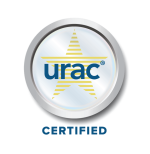A bipartisan bill, H.R. 5394 — Expanding Remote Monitoring Access Act, introduced in September 2023, is making significant progress in its legislative journey. This bill, aimed at reducing Medicare’s data collection requirement for billing remote patient monitoring (RPM) services, has successfully passed through the House Energy and Commerce subcommittee on health and is now under consideration by the full Energy and Commerce Committee. This legislative effort represents a critical step toward expanding access to RPM services and easing the administrative burdens on healthcare providers.
Disclaimer: This content is for informational purposes only and should not be considered as legal or medical advice. Always consult with a qualified professional regarding any specific legal or medical concerns.
Overview of H.R. 5394
The Expanding Remote Monitoring Access Act seeks to lower the required minimum duration for RPM data collection from 16 days to just 2 days within a 30-day period for Medicare billing. Previously, Medicare allowed this shorter duration only for patients with a suspected or confirmed COVID-19 diagnosis. This new bill aims to extend the 2-day requirement to all Medicare RPM patients, significantly broadening the scope and accessibility of RPM services.
Justification for the Change
The bill’s drafters included substantial data to justify the decision to lower the measurement collection threshold. They argue that the current 16-day requirement is not only excessive for many clinical conditions but also poses a significant burden for providers managing RPM programs. For example, patients with conditions that do not require extensive monitoring can still benefit significantly from RPM, even if data is collected over a shorter period.
Consider a program supporting 150 patients with hypertension. Under the current rules, only 100 patients might meet the 16-day data recording threshold, while the remaining 50 patients, who still receive substantial support, fail to qualify for billing. With the new legislation, providers could bill for all 150 patients, recognizing the care delivered even when data is collected for only 2 days. This change, if the bill passes, is expected to alleviate administrative burdens and improve the financial viability of RPM programs.
Broader Implications of H.R. 5394
Impact on Healthcare Providers
The proposed reduction in data collection requirements is poised to have a significant positive impact on healthcare providers. By lowering the threshold to 2 days, the bill aims to make RPM more practical and less burdensome for providers, enabling them to bill for services provided to a larger number of patients. This is particularly beneficial for small and mid-sized practices that may struggle to meet the current 16-day requirement due to resource constraints.
Benefits for Patients
From a patient perspective, the bill is expected to enhance access to RPM services, particularly for those with chronic conditions that require ongoing monitoring but not necessarily daily data collection. This could lead to better health outcomes, as patients will have more opportunities to engage with their healthcare providers through RPM, leading to timely interventions and more personalized care plans. The benefits of remote patient monitoring are evident in improved patient health outcomes and increased engagement.
Economic and Clinical Justifications
The bill’s proponents have highlighted several key benefits of RPM that justify the proposed changes. For instance, the Department of Veterans Affairs has used RPM to reduce bed days and hospital admissions, demonstrating the technology’s potential to improve patient health outcomes and reduce long-term healthcare costs. By lowering the data collection requirement, H.R. 5394 aims to replicate these benefits across a broader patient population.
Legislative Process and Support
H.R. 5394 has garnered unanimous bipartisan support in the subcommittee, reflecting a broad consensus on the importance of expanding access to RPM. This support is crucial as the bill moves to the full Energy and Commerce Committee for further consideration. The bill’s passage is a testament to the growing recognition among policymakers of the value of RPM in improving healthcare delivery and outcomes.
Comparison with Other Telehealth Legislation
H.R. 5394 is part of a larger trend toward expanding telehealth services and reducing regulatory barriers. For example, the Energy and Commerce Committee recently passed 21 pieces of telehealth extension legislation, underscoring the significant momentum behind telehealth expansion. These legislative efforts collectively aim to enhance the flexibility and effectiveness of telehealth services, ensuring that patients have access to the care they need, regardless of their location.
Potential Challenges and Considerations
While the bill has strong support, there are several considerations and potential challenges that stakeholders must address as it moves through the legislative process.
Ensuring Adequate Oversight and Quality Control
One potential concern is ensuring that the reduced data collection requirement does not compromise the quality of care. It will be essential to establish robust oversight mechanisms to ensure that RPM services continue to meet high standards of care and effectively monitor patient health. Healthcare providers will need clear guidelines on implementing RPM programs under the new requirements to maintain consistency and reliability in patient monitoring.
Addressing Provider and Patient Education
Another critical consideration is the need for comprehensive education and training for both providers and patients. Providers must be equipped with the knowledge and tools to implement RPM effectively under the new guidelines. Similarly, patients must understand the importance of RPM and how to use the remote patient monitoring devices correctly. Education efforts will be key to maximizing the benefits of RPM and ensuring successful adoption.
Integrating RPM into Broader Healthcare Systems
For RPM to be truly effective, it must be seamlessly integrated into broader healthcare systems and workflows. This includes ensuring compatibility with electronic health records (EHR) systems and other healthcare technologies. Policymakers and healthcare providers will need to collaborate to address technical and operational challenges and ensure smooth integration.
Next Steps and Future Outlook
As H.R. 5394 moves to the full Energy and Commerce Committee, stakeholders in the healthcare industry are optimistic about its potential to streamline RPM billing processes and expand access to vital remote monitoring services. The bill’s passage would represent a significant step forward in making RPM more accessible and practical for both providers and patients.
Broader Implications for Telehealth and Healthcare Innovation
The success of H.R. 5394 could pave the way for further legislative efforts to enhance the flexibility and effectiveness of telehealth and RPM programs. By reducing the data collection burden, the bill aims to make RPM more accessible to a broader range of patients, ultimately improving healthcare outcomes and efficiency. This legislative effort is part of a broader trend toward embracing digital health innovations and leveraging technology to improve patient care.
Conclusion
The advancement of H.R. 5394 through the House Energy and Commerce subcommittee on health marks a significant milestone in the expansion of patient remote monitoring services. The proposed reduction in the data collection requirement from 16 days to 2 days within a 30-day period is expected to alleviate burdens on healthcare providers and extend the benefits of RPM to more Medicare patients. As the bill moves to the full committee for consideration, its bipartisan support bodes well for its future passage and implementation.
For more information on the developments and implications of H.R. 5394, you can refer to the original sources provided:









